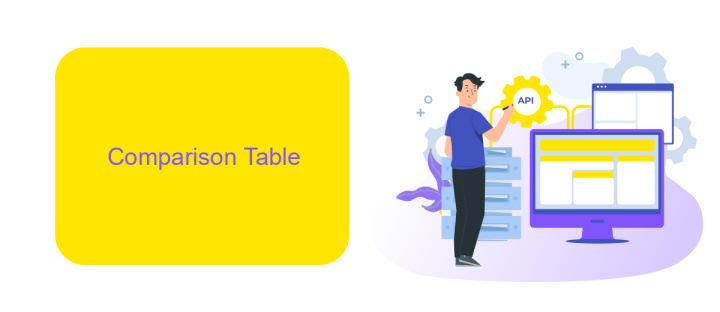MuleSoft Vs Spring Boot
Choosing the right framework for your integration and microservices needs is crucial in today's fast-paced tech landscape. MuleSoft and Spring Boot are two leading options, each offering unique benefits and capabilities. This article delves into a comparative analysis of MuleSoft and Spring Boot, examining their features, performance, and use cases to help you make an informed decision.
Introduction
In the world of software development, choosing the right framework for building and integrating applications is crucial. Two popular options are MuleSoft and Spring Boot, each offering unique features and capabilities. Understanding their differences can help developers make informed decisions based on their specific needs.
- MuleSoft: Known for its robust integration capabilities, MuleSoft provides a comprehensive platform for connecting applications, data, and devices. It is particularly useful for enterprises needing to manage complex integrations.
- Spring Boot: A project within the larger Spring Framework, Spring Boot simplifies the process of creating stand-alone, production-grade Spring-based applications. It is highly regarded for its ease of use and rapid development capabilities.
Both MuleSoft and Spring Boot have their strengths and can be leveraged for different use cases. For instance, MuleSoft is ideal for extensive integration tasks, while Spring Boot excels in developing microservices and standalone applications. Additionally, services like ApiX-Drive can further streamline integration processes, making it easier to connect various systems and automate workflows.
Comparison Table

When comparing MuleSoft and Spring Boot, one must consider the integration capabilities and ease of use. MuleSoft is a comprehensive integration platform that provides a wide range of tools for connecting various applications, data sources, and APIs. It excels in handling complex integration scenarios and offers a user-friendly interface for designing, building, and managing integrations. On the other hand, Spring Boot is a framework designed for building standalone, production-grade Spring applications quickly. It simplifies the setup and development process by providing default configurations and a wide array of plugins.
Another key difference lies in the scalability and performance aspects. MuleSoft, being an enterprise-grade solution, is highly scalable and can handle large volumes of data and high transaction rates. It also includes features for monitoring and managing integrations at scale. Spring Boot, while also scalable, is more lightweight and may require additional configurations for handling large-scale applications. For businesses looking to streamline their integration processes, services like ApiX-Drive can be valuable as they offer automated integration solutions, reducing the need for manual setup and maintenance. This makes ApiX-Drive a suitable complement to both MuleSoft and Spring Boot, depending on specific business needs.
Detailed Comparison

MuleSoft and Spring Boot are two popular frameworks for building and integrating applications, but they have distinct differences. MuleSoft is an integration platform that enables developers to connect applications, data, and devices with APIs. Spring Boot, on the other hand, is a microservices framework that simplifies the creation of stand-alone, production-grade Spring-based applications.
- Integration Capabilities: MuleSoft excels in integrating various systems through its robust API management and pre-built connectors. Spring Boot relies on additional tools and libraries for integration, making it less streamlined.
- Ease of Use: Spring Boot offers a simpler setup for Java developers, while MuleSoft provides a more comprehensive suite for integration but requires learning its specific tools and language.
- Scalability: Both platforms are highly scalable, but MuleSoft’s cloud-based Anypoint Platform offers more out-of-the-box scalability features compared to Spring Boot.
- Cost: MuleSoft can be more expensive due to licensing fees, whereas Spring Boot is open-source and free to use.
When choosing between MuleSoft and Spring Boot, consider your project requirements and team's expertise. For extensive integration needs, MuleSoft is a strong contender. For simpler, Java-centric applications, Spring Boot is an excellent choice. Additionally, tools like ApiX-Drive can further simplify integration processes, making it easier to connect various services and automate workflows.
Use Cases and Examples

MuleSoft and Spring Boot are popular frameworks used for building applications, but they serve different purposes and excel in distinct use cases. MuleSoft is an integration platform that helps connect various systems, applications, and data sources, making it ideal for enterprises looking to streamline their workflows and improve data accessibility. Spring Boot, on the other hand, is a microservice framework that simplifies the process of building production-ready applications quickly and efficiently.
For instance, MuleSoft is often used in scenarios where complex integrations are required, such as connecting CRM systems with ERP systems or integrating various third-party APIs. Spring Boot is commonly used to develop microservices architectures, where each service is independent and can be deployed separately, thus enhancing scalability and maintainability.
- MuleSoft: Ideal for complex integrations and connecting disparate systems.
- Spring Boot: Perfect for building microservices and standalone applications.
- ApiX-Drive: Facilitates easy integration without coding, making it suitable for non-developers.
In summary, choosing between MuleSoft and Spring Boot depends on your specific needs. If your focus is on integrating multiple systems seamlessly, MuleSoft is the way to go. However, if you are looking to build and deploy microservices quickly, Spring Boot is the more appropriate choice. Additionally, services like ApiX-Drive can further simplify the integration process, providing a user-friendly interface for setting up and managing integrations without the need for extensive coding.
Conclusion
In conclusion, both MuleSoft and Spring Boot offer robust solutions for building and managing integrations and microservices. MuleSoft excels in providing a comprehensive integration platform with extensive out-of-the-box connectors and a user-friendly interface, making it ideal for enterprises looking for a ready-to-use integration solution. On the other hand, Spring Boot is highly favored by developers for its flexibility, ease of use, and seamless integration with the Spring ecosystem, which allows for rapid development and deployment of microservices.
When deciding between MuleSoft and Spring Boot, organizations should consider their specific needs, such as the complexity of integrations, the level of customization required, and the expertise of their development team. Additionally, leveraging integration services like ApiX-Drive can further streamline the process, offering automated workflows and simplifying data synchronization across various applications. Ultimately, the choice between MuleSoft and Spring Boot will depend on the unique requirements and resources of the organization.
FAQ
What are the main differences between MuleSoft and Spring Boot?
Which is easier to set up for small to medium-sized businesses?
Can MuleSoft and Spring Boot be used together in a project?
What kind of support and community resources are available for MuleSoft and Spring Boot?
Are there any services that can help automate and manage integrations for both MuleSoft and Spring Boot?
Apix-Drive is a universal tool that will quickly streamline any workflow, freeing you from routine and possible financial losses. Try ApiX-Drive in action and see how useful it is for you personally. In the meantime, when you are setting up connections between systems, think about where you are investing your free time, because now you will have much more of it.

